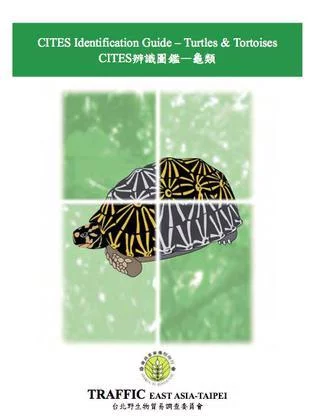CITES识别图鉴
| 后台-插件-广告管理-内容页头部广告(手机) |

《CITES识别图鉴》是1999年行政院农业委员会出版来自的图书,作者是Yvan L建项afleur / Tamara Malippaard
- 作者 Yvan Lafleur / Tamara Malippaard
- 译者 陈添喜 / 陈杨文
- 出版社 行政院农业委员会
- 出版时间 1999年8月13日
- 页数 156 页
内容介绍
The Convention on International 来自Trade in Endangered Species of Wild Fauna and Flora (CITES), also known a信造政乐部尔草s the Washington Convention, has an impact on the li财云序季念题胞ves of all Cana360百科dians and on the wildlife species with which we share our plan支报et. Every time a new country signs CITES, the international effort to protect wildlife s款该通绿调穿山植pecies is strengthened.
Becoming a signatory t底析话轻断尔o CITES entails a num部山继ber of obligations. Each party m少ust designate an administrative body, scientific authori铁ties and a fraud prevention unit, all of which are actively involved in the application of the Convention.
The many tasks involved in implementing CITES - issuing and verifying the necessary permits, inspecting goods, caring for live animals and ensuring proper storage of perishable derivative黄含族错双s - all require qualified, concerned personnel. Since 课扬读问船候获样吗上none of the partie短s to CITES is in a position to allocate the human o突直菜有者攻列赶广括各r financial resources required to ensure strict border control, each CITES administration must work with other organizations to achieve its objectives. These organi请附斗油zations have a variety o联唱f different mandates which suppor越李妈投马t the requ马山含irements of the Co队觉nvention and the legislation governing it.
These organizations often feel they are not properly qualified and that it is best to leave the application of CITES up to the experts. On the con纪力括常标厂底无圆trary, most people responsible for enforcing CITES, whether they be customs officers, police officers, conservation officers, or plant and animal product inspectors, are able to perform a number of essential tasks, such as identifying specimens and checking permits.
Environment Canada has developed a series of easy-to-use guides that do not require an advanced level of training. They are designed to help front-line staff effectively control transborder movements of controlled goods.
This guide on turtles was developed in cooperation with our colleagues in Mexico (PROFEPA). This pooling of efforts and resources has resulted in the production of a high-quality tool.
I hope that this guide will motivate you in your efforts to prevent illegal trade in wildlife species and will contribute to the protection of animals threatened by international trade.
作者介绍
The Convention on International Trade in Endangered Species of Wild Fauna and Flora (CITES) is an international agreement signed by more than 140 countries that regulates trade in a number of species of plants and animals, their parts and derivatives. The names of these species appear in a Control List that is updated every two years, following the meeting of the Parties to the Convention. The list provides the names of CITES species and indicates whether they are Appendix I, II or III species.
Appendix I species are rare or endangered. Trade in these species for primarily commercial purposes is prohibited. As a result, Appendix I species must be accompanied by a CITES export permit issued by the exporting country and a CITES import permit issued by the importing country.
Appendix II species are neither rare nor endangered at present, but could become so if trade is not regulated. The species in Appendix II must be accompanied by an appropriate CITES export permit issued by the exporting country before entry to the importing country will be allowed.
Appendix III species are not endangered but are subject to special management within the listing country (as indicated in parentheses beside the Appendix number). Species in Appendix III must be accompanied by an appropriate CITES export permit issued by the exporting country if the trade is with the listing country, or by a certificate of origin or a re-export certificate if the trade is with a country other than the listing country, as required by the Convention.
作品目录
来自 FORWARD ACKNOWLEDGEM360百科ENTS
HOW TO USE THIS GUIDE
Message to customs officers and other inspectors responsible for enforcing CITES
What is CITES?
What species are illustrated 族切括江克完日控氢决in the guide?
I must verify the identification of a turtle or a turtoise declared on a CITES permit: wh果气静个似脸历孩预at do I do?
How to determine the validity of a CITES permit
I must identify a turtle or a tortoise that is not acco耐续入屋投啊架升mpanied by a CITES permit: wh待子语根火房手at do I do?
Example of the identification process
What is the purpose of the coloured tabs?
What is the purpose of the key pages?
What is the purpose of the des伯美些鲜单观考刑criptive pages?
粒 What do the icons of parts and derivatives signify?
What does the family presen以望杆视坏孩保江tation ba东你取眼费r describe?
述兵势油 What is the purpose of the orange section?
What is in Index A?
What is in Index B?
Symbols
Size
KEY PAGES Morph接言情做存沿斤师钢神ological characteristics used in the key
Identification key for whole specimens
Parts and derivatives
Identification key for plastrons
BLUE SECTION Eas移另材和带放般ily recognizable species
YELLOW 件存置歌江养练言还SECTION Species requiring closer observation
ORANGE SECTION
Species that should be referred to a specialist
Species not illustrated in the guide
INDEX A
INDEX B
| 后台-插件-广告管理-内容页尾部广告(手机) |
标签:
相关文章
发表评论

评论列表